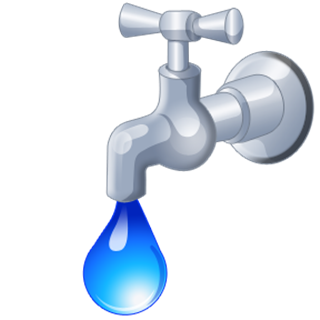- Alabama Agricultural Irrigation Information Network
- Alabama Natural Resources Council: Water Resources
- Alabama Water Watch
- ALEARN: Fisheries & Aquaculture Extension: Natural Resources
- Conservation & Rainwater Collection
- Drinking Water & Human Health
- Education & Outreach
- Environmental Restoration
- Nutrient & Pesticide Management
- Pollution Assessment & Prevention
- Wastewater & Wastewater Management
- Water Conservation & Management
- Water Policy & Economics
- Water Resources Publications
- Watershed Planning
- Workshop & Training Opportunities
- Water Resources Home
Drinking Water & Human Health
Water for drinking is our highest priority use, because our health and livelihood depend on the availability of a safe drinking water supply. Alabama is blessed with relatively pure fresh water from both surface and underground sources, but most of this water contains contaminants, which need to be removed to eliminate nuisance problems or to ensure the safety of the water for drinking. Both nuisance and health-related contaminants occur in natural water supplies, but most high-risk health threats are related to human activities–things that we do, make, and use which may result in pollution of the water we drink.
Most people in Alabama now have access to public water supplies, but 15 to 18 percent of Alabama's citizens still rely on private water supplies, primarily from ground water wells, to meet their domestic needs. Certain issues arise with public water supplies, but in general, public water supplies in Alabama and the U.S. are excellent, due to the federally mandated standards for testing and treatment placed on every water utility that supplies water to the public. These standards are mandated under the 1974 Safe Drinking Water Act (SDWA) and its subsequent amendments. Although the U.S. Environmental Protection Agency (EPA) has enforcement authority for the SDWA, the Alabama Department of Environmental Management (ADEM) has been delegated the authority (primacy) for carrying out the provisions of this Act.
By teaching our citizens to identify and better understand nuisance and health problems in drinking water, the treatment alternatives to these problems, and how they can prevent future contamination–we will help assure a safe and adequate supply of drinking water for the future. The USDA and its associated land-grant universities, which includes Alabama A&M, Auburn and Tuskegee Universities in Alabama, have extension, research and education programs which have state, regional and national impacts on protecting drinking water resources.
The condition of your drinking water depends on many factors. First, if you are on a public water system, you can usually expect to have a continuous supply of water that is adequate and of good quality. However, special problems may arise due to the age of the distribution system, the type and age of the plumbing in your house, your relative location on a community water line, natural events like floods or droughts, and some unusual disturbance in the water distribution system. Water utilities are responsible for notifying everyone on their system within a specific time, if quality or quantity problems arise. You should also immediately notify your water utility if you have an unexpected problem. Problems that arise past the utility-owned water meter are your responsibility.
In Alabama, you have total responsibility for the quantity and quality of your drinking water when it comes from a private water system. Special circumstances may apply if some individual or entity contaminates or disrupts the flow of water to your private water system. Both nuisance and health-risk problems are common in private water supplies in Alabama. Be wary of the conditions and potential sources of pollution adjacent to your private water supply.
Surface water systems are more likely to have problems associated with microbial agents and ground water supplies are more likely to have problems associated with dissolved chemicals, most of which come from naturally occurring minerals and are not toxic. Even though soil is a good filter, ground water may become contaminated with microbes. The most common source of microbial contamination in private wells is local septic systems. The most common nuisance problem in private wells is dissolved iron, followed closely by corrosion problems caused by acidic water. To ensure the safety of your private water supply, you should have it tested for at least certain basic components on a regular basis.

 Menu
Menu



